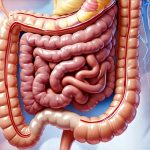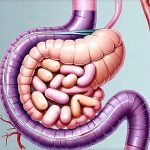Many people experience occasional stomach discomfort – bloating, gas, nausea, even diarrhea – often attributing it to something they ate. While food sensitivities and digestive disorders are common culprits, there’s a growing awareness of histamine intolerance as a potential underlying cause for these frustrating symptoms. Histamine is a naturally occurring chemical involved in many bodily functions, from immune response to digestion. However, when the body can’t properly break down histamine, it leads to a buildup that manifests in diverse and often perplexing ways, significantly impacting gastrointestinal health and overall wellbeing. Understanding this complex relationship between histamine intolerance and stomach discomfort is key for those seeking answers beyond typical digestive diagnoses.
The challenge with identifying histamine intolerance lies in its subtle and varied presentation. Symptoms aren’t always dramatic; they can creep up gradually, mimicking other conditions like Irritable Bowel Syndrome (IBS) or food allergies. Moreover, the level of sensitivity varies greatly from person to person, making diagnosis even more difficult. It’s not an allergy – it’s a metabolic issue related to the enzyme diamine oxidase (DAO), which is primarily responsible for breaking down histamine in the gut and liver. When DAO activity is insufficient, histamine accumulates, triggering a cascade of physiological responses that frequently manifest as digestive distress. This article will explore this link, delve into causes, symptoms, potential management strategies, and provide resources for further learning.
Understanding Histamine & Its Role in Digestion
Histamine isn’t just an immune player; it’s intricately woven into the fabric of our digestive system. Produced by mast cells in the gut, histamine stimulates stomach acid production – vital for breaking down food – and influences intestinal motility (the movement of food through the digestive tract). It also plays a role in nutrient absorption. A healthy level of histamine is therefore essential for optimal digestion. However, this delicate balance can be disrupted. Factors like genetic predisposition, gut dysbiosis (an imbalance in gut bacteria), certain medications, and even chronic stress can all impact DAO production and function, leading to reduced histamine breakdown capacity. This diminished capability means ingested histamine, or histamine released within the body, lingers longer causing problems.
The sources of histamine aren’t limited to foods themselves. While some foods are naturally high in histamine (fermented foods, aged cheeses, smoked fish), others can trigger histamine release within the body, even if they aren’t inherently histamine-rich. For example, certain fruits and vegetables like spinach, tomatoes, and avocados contain compounds that can stimulate mast cell degranulation – essentially causing cells to release histamine. Similarly, food sensitivities or allergies can also lead to increased histamine levels as part of the immune response. This makes pinpointing trigger foods incredibly complex; it’s not always about avoiding high-histamine foods, but identifying those that provoke a reaction in your body.
Ultimately, a compromised DAO enzyme combined with various triggers leads to an overload, causing systemic effects. The digestive system is often where these symptoms first become apparent due to the direct interaction between histamine and gut function. This explains why stomach discomfort – ranging from mild bloating to severe cramping – is such a common hallmark of histamine intolerance. It’s important to note that this isn’t about having too much histamine in your body generally; it’s about an inability to process it efficiently.
Symptoms of Histamine Intolerance & Digestive Discomfort
The sheer variety of symptoms associated with histamine intolerance can make diagnosis challenging. While stomach discomfort is prominent, the effects extend far beyond the digestive system. Common gastrointestinal symptoms include:
- Bloating and gas
- Diarrhea or constipation (or alternating between both)
- Abdominal pain or cramping
- Nausea
- Heartburn/acid reflux
- Feeling of fullness quickly after eating
However, histamine intolerance often presents with a constellation of non-digestive symptoms as well. These can include: headaches or migraines, skin rashes (hives, eczema), nasal congestion and runny nose, flushing, fatigue, anxiety, and even menstrual irregularities. This widespread impact is due to the ubiquitous role histamine plays throughout the body. It’s crucial to consider the entire symptom picture, not just focus on digestive issues when evaluating potential intolerance.
Identifying your personal triggers requires careful observation and potentially an elimination diet (discussed later). Keeping a detailed food and symptom diary can be incredibly helpful in tracking patterns and identifying correlations between what you eat and how you feel. Remember that symptoms can appear anywhere from 30 minutes to several hours after histamine exposure, making it even more difficult to pinpoint the cause without diligent record-keeping. This process of self-discovery is often the first step towards finding relief and managing histamine intolerance effectively. If you suspect a connection between [seafood and digestive discomfort], further investigation may be helpful.
Diagnosis & Testing Considerations
Currently, there isn’t a single gold-standard test for diagnosing histamine intolerance. The most commonly used method involves measuring DAO activity in blood or stool samples. However, these tests have limitations; DAO levels can fluctuate significantly throughout the day and aren’t always correlated with symptom severity. A low DAO level suggests an issue but doesn’t definitively confirm intolerance. It’s more useful to view it as a piece of the puzzle rather than a conclusive diagnosis.
Other potential diagnostic tools include:
- Symptom assessment: A thorough review of your symptoms by a healthcare professional is crucial. They will consider your medical history, dietary habits, and any other relevant factors.
- Elimination diet: This involves removing high-histamine foods from your diet for a period (typically 2-4 weeks) and then reintroducing them one at a time to observe if symptoms return. This should be done under the guidance of a healthcare professional.
- Histamine provocation test: Under strict medical supervision, a small amount of histamine is administered intravenously to assess your body’s reaction. This test carries risks and isn’t widely available.
It’s vital to rule out other potential causes of your symptoms before attributing them to histamine intolerance. Conditions like celiac disease, food allergies, SIBO (Small Intestinal Bacterial Overgrowth), and IBS can all mimic histamine intolerance symptoms. A comprehensive evaluation by a knowledgeable healthcare professional – ideally one familiar with functional medicine or integrative health – is essential for accurate diagnosis and appropriate management. Understanding [the link between hormones and stomach pain] may also be relevant during the diagnostic process. Additionally, exploring [the link between gut inflammation and diarrhea] can help differentiate potential causes of digestive distress.
Management Strategies & Dietary Approaches
Managing histamine intolerance isn’t about completely eliminating histamine from your life, as it’s naturally present in many foods. It’s about minimizing exposure, supporting DAO production, and addressing underlying factors that contribute to the imbalance.
- Low-histamine diet: This involves reducing or eliminating high-histamine foods such as fermented foods (sauerkraut, kimchi, yogurt), aged cheeses, smoked meats, alcohol (especially red wine), vinegar-containing foods, and certain fruits & vegetables.
- DAO supplementation: Taking a DAO enzyme supplement with meals can help break down histamine in the digestive tract, reducing symptom severity. Consult with your doctor before starting any supplements.
- Gut health support: Addressing gut dysbiosis through probiotics, prebiotics, and dietary changes can improve overall digestive function and potentially enhance DAO production.
- Stress management: Chronic stress can deplete DAO levels, so incorporating stress-reducing techniques like meditation, yoga, or deep breathing exercises is beneficial.
A personalized approach is key. What works for one person may not work for another. It’s important to experiment with different strategies and find what best suits your individual needs. Working with a registered dietitian specializing in histamine intolerance can provide invaluable guidance and support in developing a sustainable dietary plan. Remember that this is often a journey of self-discovery and requires patience, persistence, and collaboration with healthcare professionals. For those struggling with digestive issues related to clothing, understanding [the link between tight waistbands and digestive flow] might be beneficial. Furthermore, recognizing [the link between silent reflux and bloating] can help refine your understanding of potential triggers. Finally, if you notice skin reactions alongside digestive symptoms, investigating [the link between intestinal gas and skin rashes] could provide further insight.


















